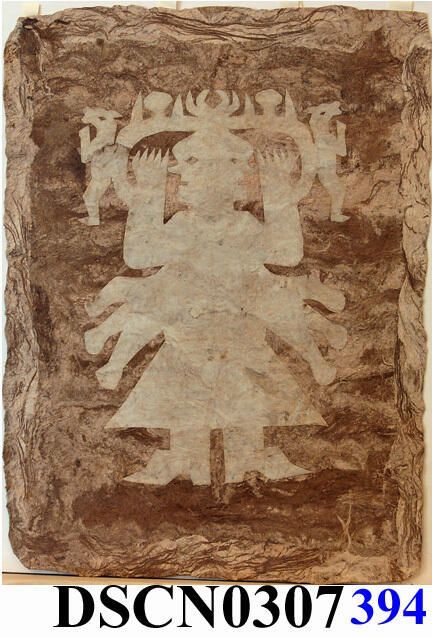Fabled Being in Amatyl Paper

Papel, or paper, amate
Papel Amate (or amatyl) although it comes in sheets, is technically not formed the same way paper is. It is referred to as “bark cloth”, “paper cloth” and as “paper”, depending on who you talk to. The most significant fact is that the oldest codex known was made from amate in the pre-Columbian era. The fibers are scraped, cooked, and beaten very much like one would to hand-make a piece of paper, even though the pulp is not poured into slurry and sheets are not pulled through a screen. Instead, fibers are pounded together with a stone; creating an irregular, luscious sheet. Papel Amate has been made for centuries by the Otomí Indians in the states of Puebla and Vera Cruz in Mexico. Traditional fibers still used today are the ficus tree's outer bark and the mulberry bush's inner bark. It claimed to be a paper with "magical" properties. Foreign academics began studying this ritual use of amate in the mid-20th century, and the Otomi people of the area began producing the paper commercially. Otomi craftspeople began selling it in cities such as Mexico City, where Nahua painters revived the paper in Guerrero to create "new" indigenous craft, which the Mexican government then promoted. Through this and other innovations, amate paper is one of the most widely available Mexican indigenous handicrafts, sold both nationally and abroad. Nahua paintings of the paper, which is also called "amate," receive the most attention. Still, Otomi paper makers have also received attention not only for the paper itself but for crafts made with it such as elaborate cut-outs. Sources are Wikipedia and Paperconnection.org
